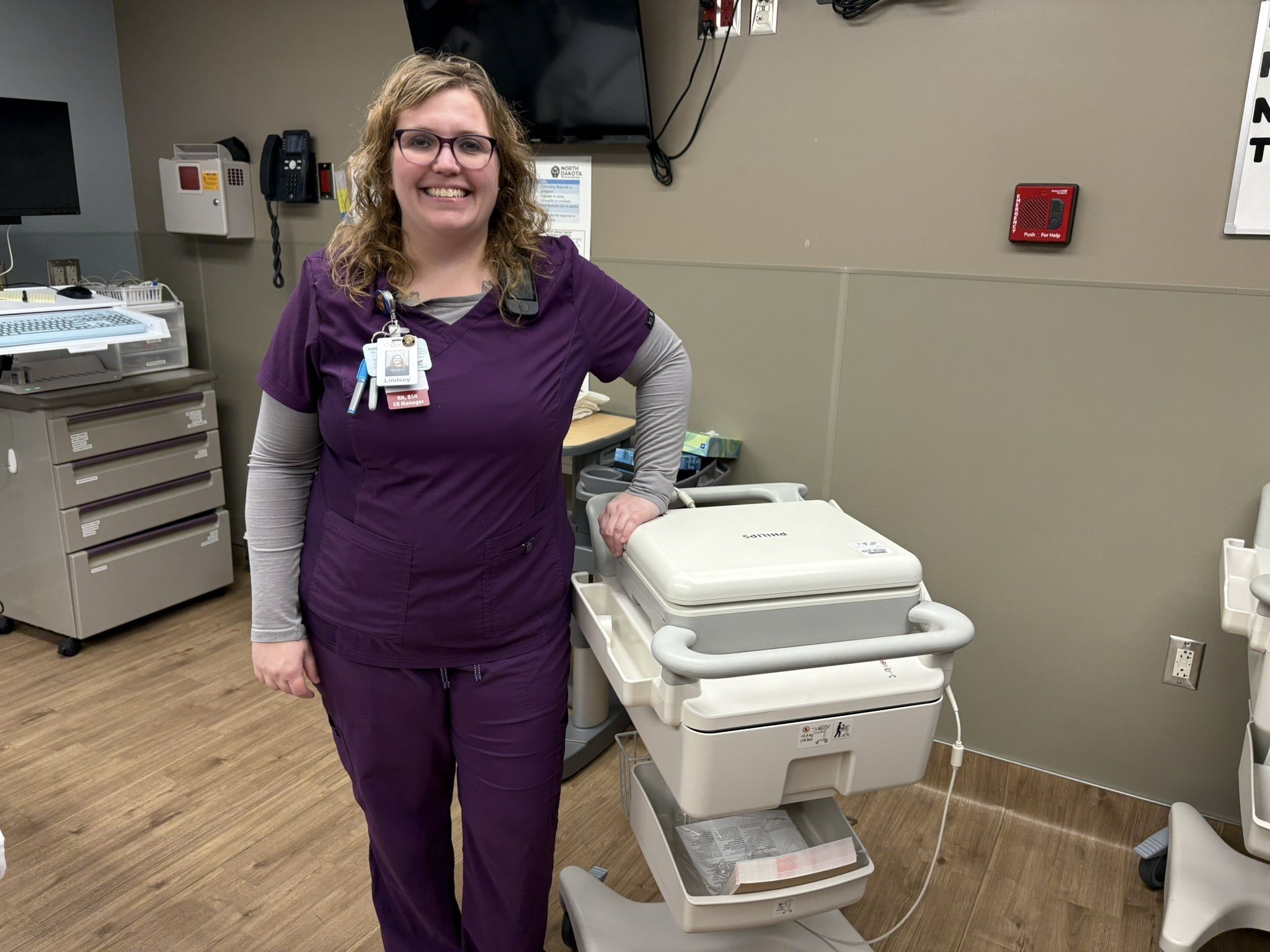Unity Medical Center Earns 3-Year Acute Cardiac Ready Hospital Designation
August 18, 2025
Unity Medical Center (UMC) has received the full three-year Acute Cardiac Ready Hospital designation from the North Dakota Cardiac System of Care (part of the North Dakota Department of Health & Human Services). UMC is the third hospital in North Dakota to receive this designation along with CHI Mercy Hospital in Valley City and Jamestown Regional Medical Center.
This means that UMC is recognized as a STEMI referring center. A STEMI, or ST-elevation myocardial infarction, is a severe type of heart attack characterized by a complete blockage of a coronary artery, causing significant damage to the heart muscle. Rapid identification, treatment, and transfer of STEMI patients offer the greatest chance of recovery.
According to Lindsey Gellner, RN, Emergency Department Manager, “After a yearlong process of developing and refining treatment protocols and performing internal reviews, in addition to developing a STEMI performance improvement program, we have received the highest recognition of cardiac care. Our function at UMC is to provide excellent stabilizing care and work closely with EMS and regional partners to provide definitive transport and management of our patients. We have always strived to provide excellent care for our patients. This recognition demonstrates our ongoing commitment to provide excellent care to not only our cardiac patients but all of our patients.”

O’Neil Receives Outstanding Rural Health Career Award
July 9, 2025
Alan O’Neil, CEO of Unity Medical Center, received the Outstanding Rural Health Career award at the 2025 Rural and Public Health Awards Banquet, which recognized outstanding North Dakota rural health and public health advocates for their accomplishments. The award is presented to a healthcare professional who has devoted his/her career to making significant contributions to improving healthcare in rural North Dakota. The awards banquet was held on June 18 in Bismarck.
O’Neil has been a part of Unity Medical Center since 2014. During that time, he has focused on the future; dedicating himself to shaping Unity Medical Center into a growing and thriving hospital. He has created a health system that provides many services that often require rural residents to travel long distances to access.
Under O’Neil’s leadership, Unity Medical Center has grown – adding an emergency department, a surgery center, 11 private patient rooms, and a conference center/rural medical education center. This physical expansion also increased the hospital’s workforce and led to the acquisition of a Da Vinci robot – the only one in North Dakota located at a Critical Access Hospital.
“Alan’s leadership has led to a positive organizational culture and work environment,” said Jenny Holand, chief nursing officer at Unity Medical Center. “He deeply cares for his employees and ensures that all departments have the equipment and support they need.”
Helmsley Charitable Trust grants $646,571 to help Unity Medical Center purchase state-of-the-art ultrasound equipment
February 18, 2025
The Leona M. and Harry B. Helmsley Charitable Trust has granted $646,571 to Unity Medical Center (Unity) to purchase ultrasound equipment including four GE Venue, one GE Voluson, one Philips Epiq Elite, two Trophon units (high level disinfection for probes), and six storage cabinets for the clean probes as part of a $27.4 million ultrasound initiative in North Dakota.
The initiative includes more than $21.8 million to help 69 North Dakota hospitals and health centers purchase ultrasound imaging devices and nearly $5.7 million to boost sonography and point of care ultrasound (POCUS) training opportunities across the state.
Alan O’Neil, Unity CEO shared, “The Helmsley Charitable Trust has been a wonderful supporter of healthcare technology and beyond. It is so apparent that leading edge technology is a critical component of providing the best patient care possible. Especially in a rural setting, where miles and minutes matter when it comes to taking care of patients. We thank them for their continued support.”
Ultrasound uses high-frequency sound waves to produce images of structures inside the body. This safe, cost-effective tool supports other clinical information to help providers make timely diagnoses and provide appropriate treatment. The grant money from the Helmsley Charitable Trust has allowed Unity to bring services to those in need, by purchasing four GE Venue Point of Care Ultrasound Machines and one GE Voluson OB machine with 3D/4D capabilities for the providers, and one diagnostic Philips Epiq Elite Ultrasound Machine for the Ultrasound department. The equipment has allowed for new services to be offered at Unity. The Point of Care Ultrasound Machines have given the providers opportunities to perform in-office ultrasound procedures. This grant has provided a positive impact on the community since more is offered from the use of the equipment. The community has experienced reduced wait times and expenses from not having to travel to another facility for diagnostic ultrasound services and procedures. This helps fulfill Unity’s commitment of bringing services to those in need.
Walter Panzirer, a Trustee of the Helmsley Charitable Trust, said the grants will help improve access to top-notch medical treatment for North Dakotans, whether they live in Fargo, Bismarck, or Grand Forks, or a smaller rural community such as Bottineau, Rugby, or Hettinger.
“These grants will help ensure that hospitals and health centers across North Dakota have the latest in state-of-the-art ultrasound equipment and training,” Panzirer said. “Facilities need to stay current with rapidly advancing technology so they can continue to provide the very best healthcare close to home.”
The majority (134) of the devices purchased through the grants are POCUS machines, which are used by providers at the bed or tableside for immediate assessment of a patient to quickly determine a course of action. The grants will also provide 57 general ultrasound systems and 24 cardiovascular ultrasound systems, which aid in imaging of the heart.
The initiative also includes nearly $1.9 million to North Dakota State University and nearly $3.8 million to High Quality Medical Education (HQMEDED) to expand sonographer expertise and provide comprehensive POCUS training to doctors, physician assistants, and nurse practitioners. Additionally, more than $64,000 will go to individual facilities to boost sonographer training.
The Helmsley Charitable Trust has committed a total of $72 million to fund ultrasound equipment and training initiatives for rural communities and underserved populations in Nevada, North Dakota, Minnesota, and Wyoming.

2024 80% in Every Community National Achievement Award Honoree
The latest blog from the National Colorectal Cancer Roundtable highlights our work to increase colorectal cancer screening rates and reach #80PercentinEveryCommunity, but especially ours in Grafton, ND! Read more about all we’ve done since October 2022 to increase rates to 71.5% screened for colorectal cancer.
https://nccrt.org/2024-honoree-blog-unity-medical-center/
2023 Annual Report
Click HERE to read our 2023 Annual Report.





